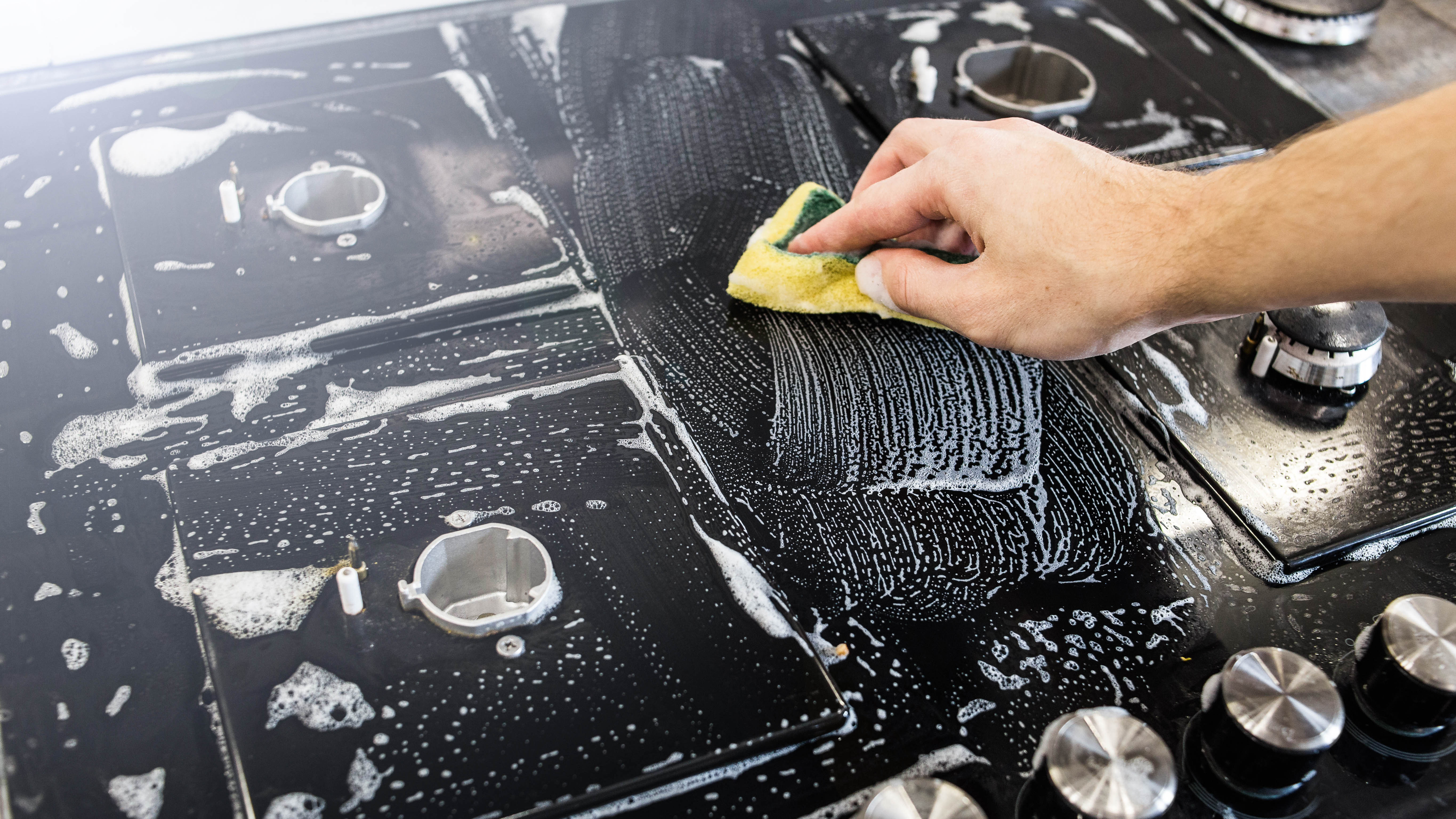Android Version History: A Timeline of New Features
Here’s a timeline of Android versions and significant updates. We explain the key features that were bundled into each major Android release.
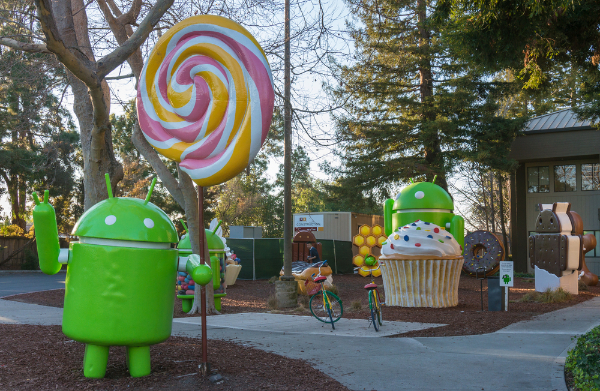
It took only five years from the release of the first device running Android for the platform to become the most popular mobile operating system on the planet. That rapid adoption rate has been matched by the pace of development on the operating system itself, transforming Google's OS from an awkward, if interesting, fledgling effort into the refined and feature-packed offering we see today. As Google looks forward to "the next billion users," let's take a look back at Android's evolution.
Android 1.0 - September 2008
Key device: HTC G1 (aka HTC Dream)
● Includes full complement of Google apps, including Gmail and YouTube.
● Amazon MP3 store handles music purchases, as Google had no music service available.
● Android Market Beta debuts with the ability to list apps and games, but there's no way to charge for them.
● Widgets are present at this early stage, but they're limited to Google's own and are not truly interactive.
Android 1.5 (Cupcake) - April 2009
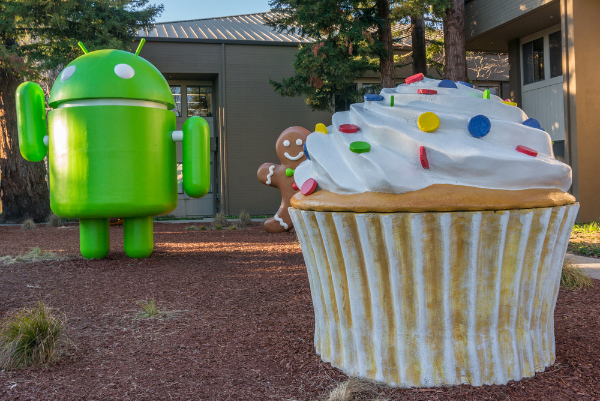
Key device: HTC myTouch 3G (aka HTC Magic)
● Android's tasty-sounding nicknames debut.
● On-screen keyboard allows Android to move away from physical keyboards.
● Camcorder app brings video recording to Android for the first time.
● Videos can be uploaded to YouTube, and photos can be uploaded to Picasa.
● Third-party widgets are now possible as a companion to an app.
● Google adds Calendar and Music widgets; calendar displays a single event and music displays the current song with play and skip controls.
● Google Talk gets its own app.
● Auto-rotation allows for an easier landscape-to-portrait transition.
● Copy-and-paste extends from input fields to the browser.
Android 1.6 (Donut) - September 2009
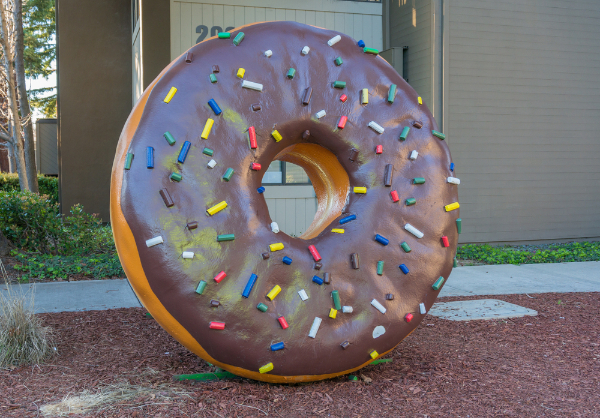
● CDMA support opens Android up to all carriers.
● Multiple screen resolutions are available for the first time.
● Android Market drops the "beta" tag and sees a significant update, ditching the original black theme for a slightly more colorful white, gray and green palette. Viewing categories allow users to sort by "Top paid," "Top free" and "Just in." Developers are now able to include screenshots (as opposed to simply a description followed by the reviews) to app listings.
● The Quick Search Box delivers the ability to search the Web and phone without launching the browser or a separate app, and results begin to populate as you type.
● Camera, Camcorder and Gallery are all now accessible together with a quick toggle to go from still to video capture with a tap. A thumbnail in the corner displays the last photo taken, and a tap takes the user to the Gallery.
● A battery-usage indicator is introduced to show the user what apps and services are using up the most battery.
● The Power Control widget brings easy toggle for Wi-Fi, Bluetooth, GPS, Sync and Brightness to the home screen.
Android 2.0 (Éclair) - October 2009
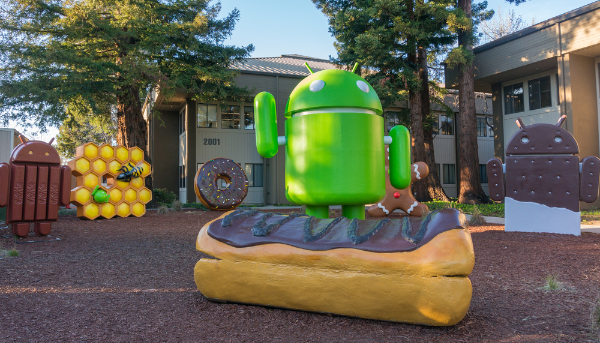
Key device: Motorola DROID
● Google Maps Navigation is introduced, bringing free turn-by-turn directions to the phone.
● Support for multiple accounts is added, with distinct Contact, Email and Calendar sync settings for each account.
● Quick Contact provides a simple way to access both contact info and various options for communicating with that contact by tapping on the person's thumbnail image. A Quick Contact widget is available in Email, Messaging and Calendar.
● Browser is updated with ability to search from the address bar, save bookmarks with thumbnails of the Web page, double-tap to zoom and HTML5 support.
● Calendar adds infinite scrolling to the Agenda view and the ability to invite guests and view attendance status for invitees.
● On-screen buttons are now available to answer and end a call, allowing Android devices to drop those hardware buttons.
● Camera gains a number of features, including support for a hardware flash, a scene mode, white balance, color effect, macro focus and digital zoom. Users are now also able to save photos to either internal storage or an SD card.
Android 2.1 - January 2010
Key device: HTC Nexus One
● Live Wallpapers bring perpetual animation to the home screen of Android devices if the user so chooses. Users can even interact with the live wallpaper by tapping on the screen. (This was a massive battery drain and a hit to performance.)
● The app drawer now takes over the entire screen when tapped with a plain black background and a persistent home button at the bottom of the screen to return you to the home screen. Animations are added to the app drawer, a theme throughout Android 2.1, which shows app icons bending off the screen at the top and bottom when the user is scrolling.
● The Alarm Clock app drops the "Alarm" from its name and switches from an Analog display to all digital. The app displays the current time and weather when tapped.
● The Gallery receives the most significant update in Android 2.1, with bountiful animations. Photos appear as piles of snapshots, and the background is taken over by a random image from your visible gallery stretched to fit the background. You can also swipe between images for the first time.
● The News and Weather app debuts along with a corresponding widget. The app displays the weather with a six-day forecast when you launch it, and you can swipe along the tabs in the app to move to the various news categories available.
● Google Voice is introduced, bringing a new way to make calls without tying your phone number to your carrier account.
Android 2.1, Update 1 - February 2010
● This update adds the pinch-to-zoom gesture — a feature previously only offered by the iPhone and notably absent from Android, despite the addition of multitouch in Android 2.0.
Android 2.2 (Froyo) - May 2010
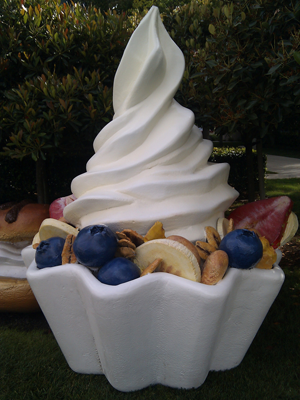
Key device: Motorola DROID 2
● Dalvik VM: Just-in-time (JIT) Compiler brings massive speed enhancements to Android.
● New API enables the ability to push content directly from the Chrome browser on the desktop to the Android smartphone.
● Apps can now be installed or moved to an SD card from internal storage to free up space on the device.
● A native hotspot feature now allows your smartphone to serve as a wireless hotspot for your other devices.
● Browser adds V8 engine from Chrome, making the browser two to five times faster.
● Flash support arrives, allowing for a full desktop browser experience on mobile.
● An Android Market update allows users to choose apps that they would like to update automatically.
● Notable apps appearing in Android 2.2 include Google Goggles, which use the camera to do a visual search, and a Twitter app through a partnership with Google.
● While not part of Android 2.2, Voice Actions become available between Android 2.2 and 2.3, allowing Android users to carry out numerous actions by voice alone.
Android 2.2 Official Video: https://www.youtube.com/watch?v=yAZYSVr2Bhc
This is the oldest version of Android that is able to access the Google Play store, and thus the oldest version appearing in the monthly platform breakdown; 0.3 percent of Android devices accessing the Google Play store are still running Android 2.2 as of this writing.
Android 2.3 (Gingerbread) - December 2010
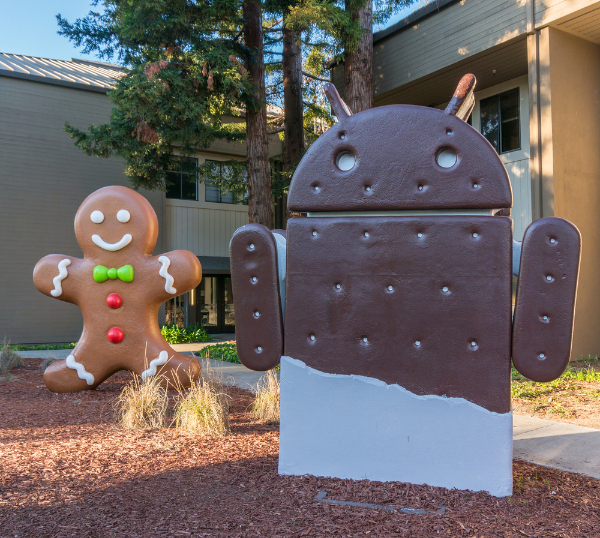
Key device: Samsung Nexus S
● The on-screen keyboard is redesigned to improve typing speed and accuracy, and suggestions are now available as you type.
● Copy-and-paste is much improved, with arrows on either side of the area selected initially that can be moved to grab the appropriate text.
● Support for near-field communication (NFC) is included for the first time.
● Android Market 2.0 brings another major visual change to the app. The top of the app is now dominated by a green banner with a rotating list of featured apps, followed by the familiar options of Apps and Games, but Downloads is now replaced with My Apps, and each simply appears in the banner with a representative icon rather than a delineated tab.
● Google Books is introduced but still requires that you go to a website in order to purchase books.
Gingerbread is still found on 5.6 percent of Android devices accessing the Google Play store as of this writing. Some of the most notable devices that remain on Android 2.3 are the Samsung Galaxy S, Motorola Droid X, HTC Evo 4G and the HTC Nexus One.
Android 3.0 (Honeycomb) - February 2011
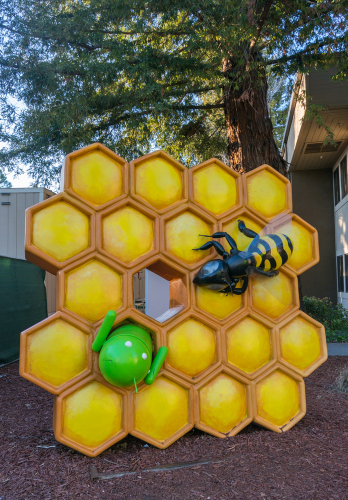
Key device: Motorola Xoom
● This is the first version of Android under the design direction of Matías Duarte and the first to share a cohesive look known as Holo (holographic) across the operating system and apps.
● Notably, Android 3.0 is designed for tablets only, which left Google free to design with a significantly larger screen in mind.
● The Fragments API was introduced to deal with this break between tablets and phones, which allowed developers to create multiple screens for a phone interface that could then be displayed together on the tablet.
● The status bar is moved to the bottom of the screen and brings soft navigation keys to it. The bar is persistent unless developers opt for a "lights-out mode" that dims the bar, allowing the app to take over the full screen.
● Recent Apps appears for the first time, allowing users to view a set number of most recently used apps and to switch among them.
● The Action Bar concept is introduced, providing a consistent space for an app's most used functions in the upper-right corner of the current app.
● Widgets are much more interactive, and let users flip through stacked content or scroll through content displayed in the widget.
● The added screen space allows the browser to include legitimate tabbed browsing and brings incognito mode (anonymous) browsing to mobile. Users can sign in to the browser and sync bookmarks with the desktop version of Google Chrome.
There are no devices still running Honeycomb; this version of Android was never open-sourced, and all devices running Honeycomb were updated to at least Ice Cream Sandwich.
Android 4.0 (Ice Cream Sandwich) - October 2011
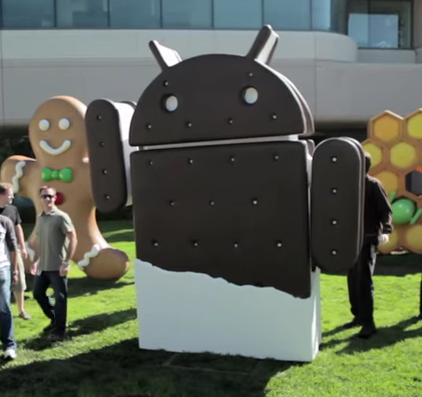
Key device: Samsung Galaxy Nexus
● Ice Cream Sandwich debuts eight months after Honeycomb and wipes Honeycomb off the books completely. Ice Cream Sandwich retains many of the design ideas introduced in Honeycomb, but tones down the sci-fi look.
● All navigation is brought on-screen, meaning that it is now possible to release a device with only a power and volume buttons.
● Users are now able to create folders on the home screen by simply dropping apps on top of one another.
● Widgets are now resizable, showing more or less content depending on how large the user makes them.
● The option to respond to an incoming call by text message is added, as is the option to create your own customized messages.
● The swipe gesture to dismiss notifications, recent apps or browser tabs is added for the first time.
● The keyboard and text suggestions receive another upgrade, and a spell-checker underlines misspellings in red and offers suggested corrections when tapped.
● Voice input can now handle users speaking continuously with pauses and dictating punctuation.
● Adds the ability to monitor your own data usage and set warnings and hard limits for mobile or Wi-Fi to avoid costly overages.
● Music joins Books and Movies in the Android Market.
● Between Ice Cream Sandwich and Jelly Bean, Android Market was renamed as the Google Play store, and all relevant apps were renamed to match (e.g., Play Music, Play Books, Play Movies and Play Store).
Ice Cream Sandwich represents 5.1 percent of the devices accessing the Play store today. There are no notable devices that ended their update cycle on Android 4.0, so users remaining on it are either ignoring an available update or using one of the many lesser-known Android devices.
Android 4.1 (Jelly Bean) - June 2012

Key device: Asus Nexus 7
● Google Now is introduced as part of Search. It displays information in a card view that Google believes is relevant to you based on the information available in your Google apps and via your search history.
● Notifications are greatly expanded in Jelly Bean, with the ability to quite literally expand notifications by tapping or pinching them. Notifications can display eight lines of text and could feature buttons at the bottom of the notification to take action.
● Google Play services becomes a way for Google to update Android devices without having to go through the carriers with a full OS update.
● "Project Butter" makes Android faster and smoother using triple buffering, VSync and touch responsiveness.
This version of Android remains on 14.7 percent of devices accessing the Google Play store today. Some of the most popular devices still on Android 4.1 are the Samsung Galaxy S2, Samsung Galaxy Note, the Motorola Xoom, Motorola Droid Razr, Motorola Droid RAZR MAXX and Samsung Nexus S.
Android 4.2 - October 2012
Key device(s): LG Nexus 4 and Samsung Nexus 10
● Lock-screen widgets allow users to interact with app widgets directly from the lock screen without having to unlock the device.
● Daydream debuts — Google bills it as an "interactive screensaver mode" that your device will switch to when docked or plugged in.
● External displays are now supported, and can target specific content to specific displays rather than simply mirroring what is on the screen. You can also do so wirelessly via Wi-Fi Display (Miracast).
● High Dynamic Range photography comes natively to Android with an HDR scene mode.
Android 4.2 is on 17.5 percent of Android devices accessing the Google Play store. The international versions of the Samsung Galaxy S2 and Galaxy Note managed one more update beyond their U.S. counterparts. The CDMA version of the Samsung Galaxy Nexus also came to the end of the line at Android 4.2.
Android 4.3 - July 2013
Key device: Asus Nexus 7 (2nd generation)
● Bluetooth Low Energy support is added to Android ahead of the coming wave of wearables that rely on the Bluetooth LE.
● OpenGL ES 3.0 enables improved high-performance graphics for devices with supported hardware.
Android 4.3 remains on just 5.2 percent of Android devices today. The Motorola Atrix HD for AT&T is one device that ended its run of updates here.
Android 4.4 (KitKat) - September 2013
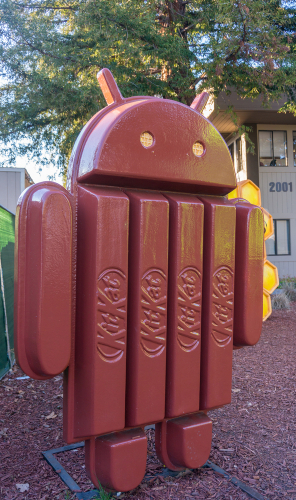
Key device: LG Nexus 5
● For the first time in three versions, a new name debuts!
● KitKat begins the efforts to make Android better on low-end hardware, with the possibility of running it with as little as 512MB of RAM.
● Google Now Launcher is now available as a home screen, and when it is running, users can simply say, "OK, Google" and then search by voice or use Voice Actions.
● The black backgrounds are banished from most screens in KitKat in favor of transparencies, which display your wallpaper behind them.
● The Messaging app is finally gone, thanks to Google Hangouts' ability to deal with SMS.
● The Photos app, which is part of Google+, appears while the Gallery app remains.
● Offers support for Host Card Emulation (HCE), making NFC-based payments or other transactions more secure.
● Truly full-screen apps are possible for the first time, and hide even the status bar.
● Google Drive becomes a default app as a gateway to Google's office suite.
KitKat remains the most popular single version of Android at the moment, making up 39.2 percent of all devices accessing Google Play. Many popular devices ran aground with Android 4.4 as their last update, including the Samsung Galaxy S3 and Samsung Galaxy Note II on all carriers, the HTC One Max on Sprint and Verizon, and the Motorola Droid Razr HD and Droid Razr Maxx HD on Verizon.
Android 5.0 (Lollipop) - November 2014
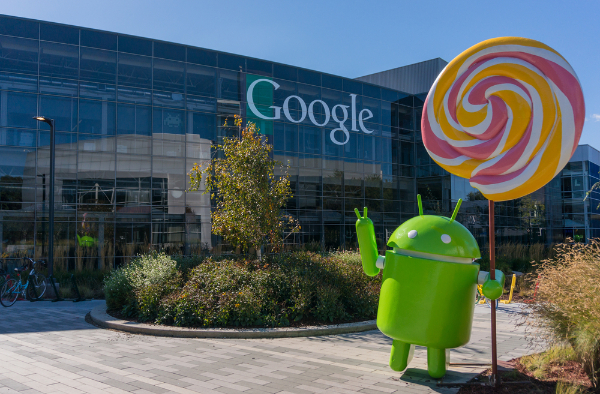
Key device: Motorola Nexus 6
● Android settles on a new design philosophy with "Material design" and publishes these design guidelines for others to follow.
● Android Runtime with ahead-of-time compilation replaces the Dalvik VM with just-in-time compilation introduced in Android 2.2.
● Android TV launches, bringing Android to the big screen.
● OpenGL ES 3.1 allows for even more immersive and visually captivating Android gaming.
● Android at Work is introduced, allowing for separate device profiles for personal and work use.
● Notifications now merely pop up as a banner, with options to deal with them immediately or simply dismiss them, rather than having them take over the screen.
● Smart Lock lets you unlock your device automatically when a trusted Bluetooth device (like a smartwatch) is present.
● RAW image support is now available for photographers who want every last bit of data available from the image sensor.
Android 5.0 is currently on 11.6 percent of devices accessing Google Play.
Android 5.1 - March 2015
Key device(s): Android One smartphones
● Quick Settings panel is smarter, with animations to indicate when settings are being changed and quick drop-downs for switching Wi-Fi or Bluetooth connections.
● Device Protection keeps your data safe even if your phone is lost or stolen. A thief can factory-reset the device, but it will still remain locked unless your Google account login is entered.
● Sound profiles are made clearer with specific times displayed if you are allowing only Priority or No Interruptions to come through. You also can set the restrictions just until your next alarm, so you don't have to worry about oversleeping.
● HD voice calling gains official support.
● Dual-SIM support is now officially part of Android as well.
Android 5.1 is on just 0.8 percent of all Android devices accessing Google Play.
Sign up to get the BEST of Tom's Guide direct to your inbox.
Get instant access to breaking news, the hottest reviews, great deals and helpful tips.
A self-professed "wearer of wearables," Sean Riley is a Senior Writer for Laptop Mag who has been covering tech for more than a decade. He specializes in covering phones and, of course, wearable tech, but has also written about tablets, VR, laptops, and smart home devices, to name but a few. His articles have also appeared in Tom's Guide, TechTarget, Phandroid, and more.

